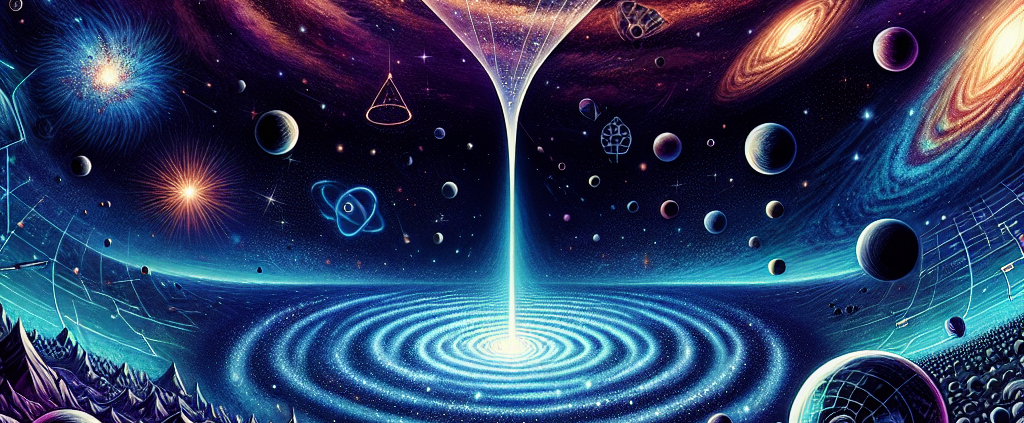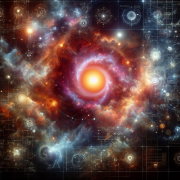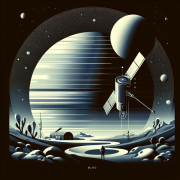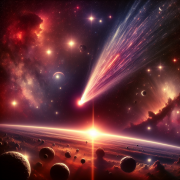Exploring the Cosmos: The Power of Gravitational Lensing
Understanding Gravitational Lensing
Gravitational lensing, a fascinating phenomenon predicted by Einstein’s theory of relativity, provides profound insights into the cosmos, revealing the universe’s most secretive entities. As someone deeply immersed in the world of technology and artificial intelligence, my journey from a senior solutions architect at Microsoft to the founder of DBGM Consulting, Inc. has instilled in me the importance of constantly exploring the unknown and leveraging it to advance our understanding of the world. In this exploration of gravitational lensing, we will delve into its fundamentals, types, and the crucial role it plays in astronomical discoveries and our understanding of the universe.
What is Gravitational Lensing?
Gravitational lensing occurs when the gravitational field of a massive object, such as a galaxy or a black hole, warps the space around it, bending the path of light that passes near it. This effect can magnify, distort, or even multiply the images of distant celestial bodies, making it a powerful tool for astronomers.
Types of Gravitational Lensing
- Strong Lensing: Occurs when the alignment of the source, lens, and observer is so prefect that it creates multiple, highly magnified images or even Einstein rings.
- Weak Lensing: Involves slight distortions in the shape of background galaxies, which can be detected statistically over large areas of the sky.
- Microlensing: Happens when the lensing object is of low mass, often a star, and the magnification of the background object is small.
Applications of Gravitational Lensing
Gravitational lensing has become an indispensable tool in cosmology and astrophysics, uncovering phenomena that would otherwise remain obscured from our view.
Discovering Dark Matter
The presence of dark matter has been inferred through gravitational lensing. By observing the distortions in the images of distant galaxies, astronomers can map the distribution of dark matter, providing clues about the universe’s structure and composition.
Studying Exoplanets
Microlensing has been utilized to detect exoplanets. The minute magnification caused by a planet orbiting a distant star can indicate the planet’s presence, offering insights into its mass and orbit.
Exploring Distant Galaxies
Gravitational lensing allows astronomers to study distant galaxies that would otherwise be too faint to detect. This has led to the discovery of some of the most distant galaxies known, shedding light on the universe’s early stages.
Case Study: Probing the Early Universe
In my previous work at Microsoft, leveraging cloud solutions to handle vast amounts of data was a day-to-day affair. Similarly, gravitational lensing requires the analysis of massive datasets to extract meaningful information about the lensed objects. One notable instance is the study of the galaxy cluster Abell 1689. This cluster acts as a powerful gravitational lens, magnifying galaxies behind it that formed shortly after the Big Bang. By studying these galaxies, researchers can gain invaluable insights into the early universe.
Challenges and Opportunities
Despite its potential, gravitational lensing is not without its challenges. The precise measurement and interpretation of lensing effects require sophisticated models and simulations. Here, artificial intelligence and machine learning algorithms, areas of my academic focus at Harvard University, play a crucial role. These technologies can help refine our models, making the analysis of gravitational lensing data more accurate and efficient.
Conclusion
Gravitational lensing serves as a bridge between the invisible and the visible, the known and the unknown. Its study not only advances our understanding of the cosmos but also underscores the importance of interdisciplinary approaches, merging astrophysics with cutting-edge technology and data analysis. Just as my transition from a photographer capturing the world through a lens to unraveling the mysteries of the digital world has shown me, there are infinite perspectives to explore and understand—each with its unique story to tell about the universe and our place within it.









Leave a Reply
Want to join the discussion?Feel free to contribute!